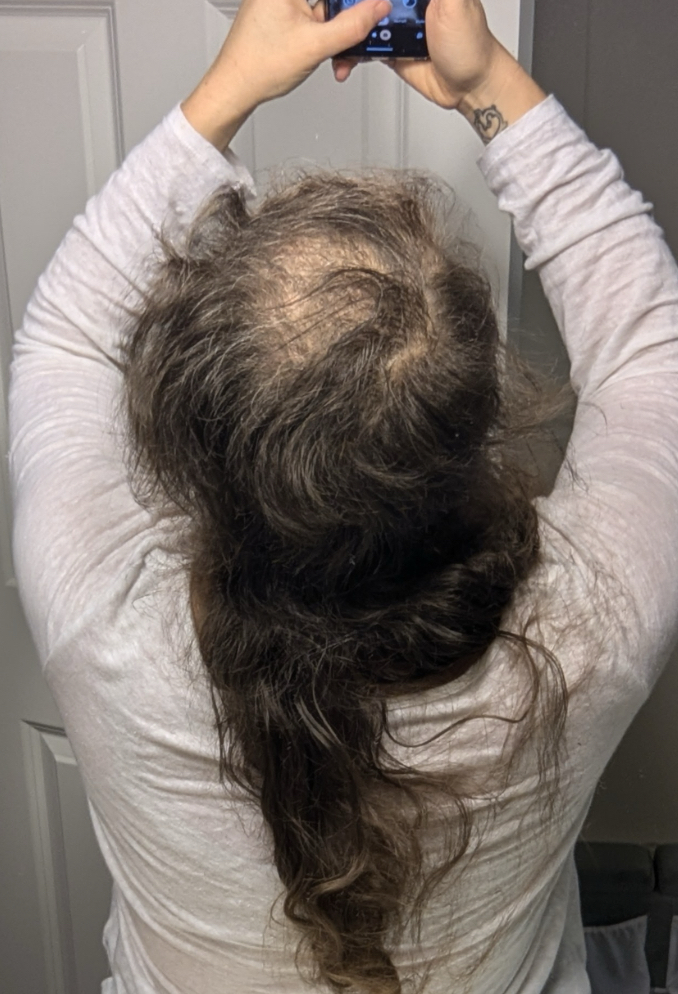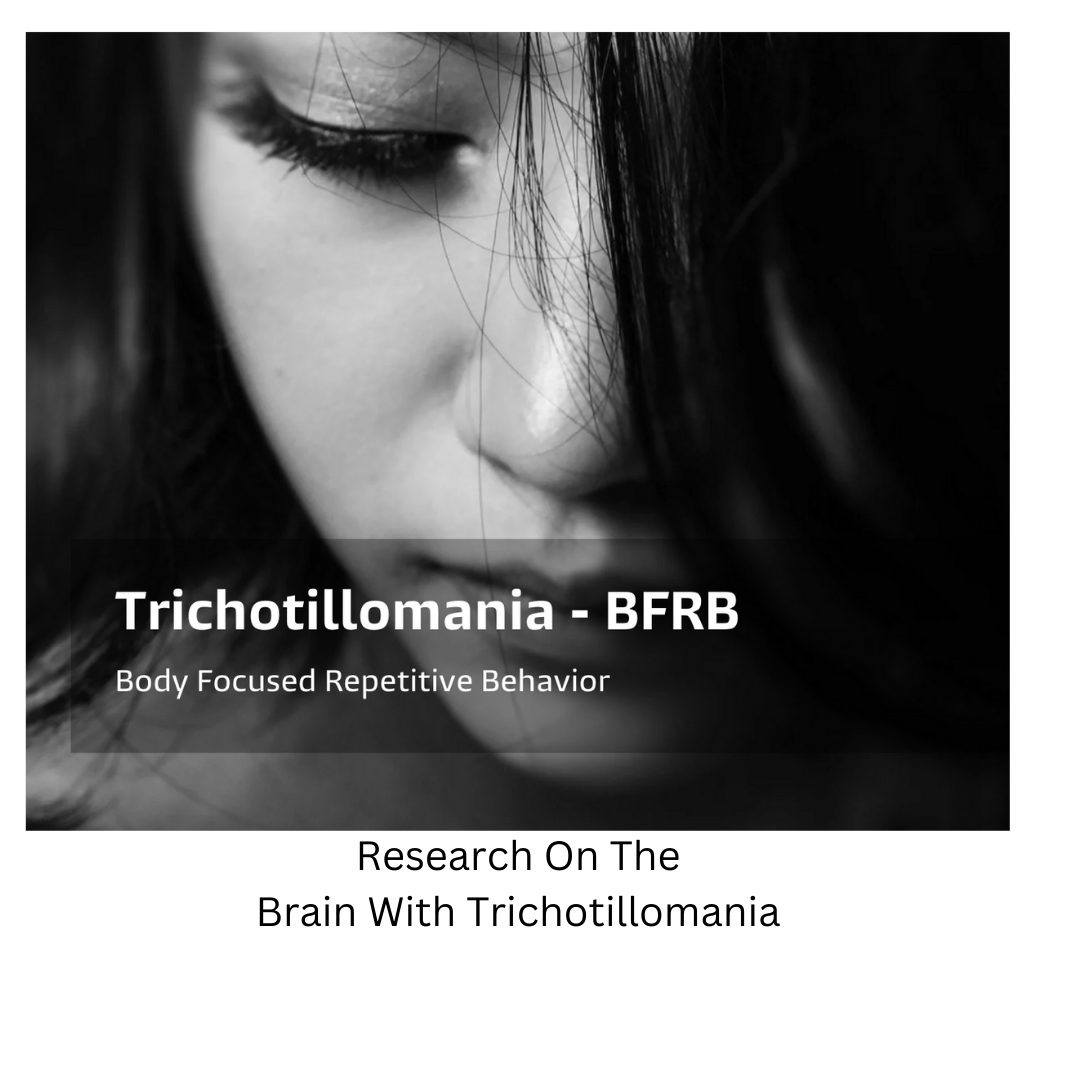Unveiling Trichotillomania: Brain Matter Tracts Revealed
It is my passion to pass on research and insight that I receive from the community of people with Trichotillomania, we run a Facebook group page, and a recent post caught my attention. I hope his research helps to spark interest in create more research!
A Trichotillomania Facebook Post about a Brain with Trichotillomania
I've been on several Trich pages but just joined this one. Was diagnosed at 10 years old, which correlates with the most common age of onset for Trichotillomania, especially in young children, and had OCD and ADHD as well. I struggled with Trich most of my life and endeavored to do a lot of self-care… basically had an I don't care attitude and casual outside demeanor, did not take any medication until a few years ago when my OCD and Trich had already begun to subside.
I haven't pulled for over three years, the urge is completely gone. I'm in recovery I suppose trying to regrow the damaged areas. But I really feel the key is to stop first then try and let it grow.
There's no such thing as an overnight fix, through research I've found out what medical professionals already know they just don't tell us or a lot of them don't read enough.
Trich is mainly caused by brain abnormalities, increased Gray Matter, and reduced or disorganized White Matter. It's also the reason why more women get it than men, girls have naturally reduced developed White Matter compared to boys.
Medication can help to a very limited degree but can't completely make it stop, what it takes is relaxation, and de-stressing methods combined with a repetitive physical/mental focused activity like drawing, painting, practicing a musical instrument, juggling, or yoga.
These activities done on a regular basis over time can literally alter the brain's Neuro Pathways and tighten up the Mylene (White Matter.)
It's complicated but it works, but it's not a casual thing. It takes determination, a lifestyle change, removing toxic relationships, and self-care being the biggest priority. If a job or person is stressing you out, leave. Get it out of your life.

Is Trichotillomania a Psychological Condition?
I'm an artist, all these things worked for me. And after researching it I found this is exactly what therapists recommend and what medical experts found is that Trich is NOT a psychological condition but a physiological condition with psychological effects.
There IS a way to stop, to make the urge disappear but it takes commitment, a lifestyle change and it won't happen overnight. Please do some research, look up White Matter/Grey Matter studies related to Trichotillomania, and read for yourself.
And the only way to really make it go away is to "rewire" your brain through a regular focused activity combined with de-stressing.
Also, a healthy diet is key because certain things like caffeine, and too much sugar are just really really bad for people like us.
There's a lot to it. But those are the basics."

I reached out to this member, and he shared some valuable information and resources.
Trichotillomania, also known as hair-pulling disorder or compulsive hair pulling, is a mental health condition that involves recurrent and irresistible urges to pull out one's hair, resulting in noticeable hair loss. This body-focused repetitive behavior can have significant psychological impacts. This document will explore various aspects related to trichotillomania, including its association with white and grey matter in the brain, as well as its connection to other conditions such as Tourette's syndrome, dermatillomania, and obsessive-compulsive disorder (OCD). Additionally, we will discuss the importance of a healthy diet in managing trichotillomania and the potential causes of this condition.
White and Grey Brain Matter
White and grey matter in the brain play significant roles in the manifestation of trichotillomania. Research suggests that abnormalities in white matter tracts, which are responsible for transmitting signals between different brain regions, may contribute to the development of this disorder. Similarly, dysfunction in grey matter, which is associated with cognitive processing and decision-making, can impact the control of impulsive behaviors, including hair-pulling. Understanding these brain mechanisms is crucial for developing effective treatments for trichotillomania.
Trichotillomania can be observed in different forms, such as white matter trichotillomania and grey matter trichotillomania. These terms refer to the specific brain regions or pathways that are implicated in the disorder. By studying these variations, researchers aim to gain insights into the underlying neurobiology of trichotillomania and potentially identify targeted treatments.
Furthermore, trichotillomania often co-occurs with Tourette's syndrome, a neurological disorder characterized by repetitive, involuntary movements and vocalizations known as tics. According to the Diagnostic and Statistical Manual of Mental Disorders, the presence of both conditions, including the risk of major depressive disorder, can complicate diagnosis and treatment, as the symptoms of trichotillomania may be mistaken for tics. Therefore, a comprehensive evaluation is necessary to differentiate between the two and develop appropriate management strategies.
Dermatillomania Compulsive Behavior
Another related condition is dermatillomania, also known as skin-picking disorder, which specifically involves skin picking behaviors as well. Like trichotillomania, dermatillomania involves compulsive behaviors, in this case, picking at the skin, which can lead to tissue damage. Although they are distinct disorders, they share similarities with body dysmorphic disorder in terms of their underlying mechanisms and treatment approaches. Understanding the relationship between these conditions can contribute to a better understanding of trichotillomania and inform treatment interventions.
Lifestyle and Diet Factors
In addition to exploring the neural and psychological aspects of trichotillomania, it is important to consider the impact of lifestyle factors, such as diet. While there is no specific diet that can cure trichotillomania, maintaining a healthy and balanced diet can support overall well-being and potentially reduce stress levels, which may be a contributing factor to hair-pulling episodes. Incorporating nutritious foods, staying hydrated, and avoiding excessive caffeine or sugar intake can be beneficial for individuals with trichotillomania.
What is the Cause of Trichotillomania
The causes of trichotillomania, including the cause of trichotillomania, are multifactorial and not yet fully understood. Research suggests that a combination of genetic, environmental, and psychological factors, including family conflict, may contribute to its development. Genetic studies have identified potential gene variants associated with trichotillomania, although further research is needed to determine their precise mechanisms. Environmental factors, such as a stressful situation, trauma, or learned behaviors, can also play a role in triggering or exacerbating hair-pulling episodes. Additionally, psychological factors, including anxiety, depression, or OCD, are commonly associated with trichotillomania.
Best Therapies for Trichotillomania
For individuals seeking ways to stop hair pulling (also known as "trich"), various treatment options including hair removal methods are available. These can include therapy techniques or approaches such as cognitive behavioral therapy (CBT), cognitive behavioral therapy methods like habit reversal training (HRT), or acceptance and commitment therapy (ACT). Medications, such as selective serotonin reuptake inhibitors (SSRIs), may also be prescribed in some cases. It is important to consult with a healthcare professional to determine the most appropriate treatment plan based on individual needs and circumstances.
Pathophysiology of Trichotillomania
The pathophysiology of trichotillomania is complex, involving a multifaceted interplay between neurological and psychological factors as highlighted by grant je research. Research indicates that individuals with this disorder may exhibit abnormalities in brain structure and function, particularly within the white and grey matter. Neuroimaging studies have shown that people with trichotillomania often have distinct patterns of grey matter density that can affect cognitive processes, such as impulse control and emotional regulation. Moreover, the role of serotonin reuptake inhibitors and tricyclic antidepressants in treatment suggests a potential link between neurotransmitter imbalances and the disorder's manifestation. A thorough systematic review differential diagnosis is essential, as similar symptoms can arise from other conditions, complicating the clinical picture and necessitating a comprehensive assessment to tailor effective treatment strategies.
Conclusion
In conclusion, trichotillomania is a complex disorder that involves both white and grey matter brain abnormalities. It can co-occur with other conditions like Tourette's syndrome, dermatillomania, and OCD. While the exact causes of trichotillomania remain unclear, a combination of genetic, environmental, and psychological factors is thought to contribute to its development. By understanding the underlying mechanisms and exploring various treatment options, individuals, including young adults with trichotillomania, can find effective strategies to manage and overcome this challenging condition.
Resources to explore; credit to those who have shed light on this condition.
Hair Loss background
With Alopecia Areata, fungal infections, other autoimmune diseases, thinning hair by Trichotillomania which removes hair follicles by physical means, including possible tinea capitis. At Noelle Salon, we cover the various approaches to hair solutions to treat hair loss, traction alopecia, female pattern baldness, balding spots, and other conditions to which you lose hair. At Noelle Salon, we focus on hair growth techniques. Hair systems and hair extension maintenance is part of the journey while wearing them. For Trichotillomania, as our hair grows they both will loosen, and service is required. The difference between a hair system and hair extensions for Trichotillomania clients varies based on the location of hair loss.
Trichotillomania Complications
Trichotillomania can lead to several medical complications, which can significantly affect a person's quality of life. One of the most concerning outcomes is the potential for permanent loss of hair, particularly if hair-pulling continues over an extended period, which can lead to bald patches. This can result in traction alopecia, where hair follicles become damaged due to the constant pulling, ultimately leading to scarring and irreversible hair loss. Additionally, individuals may wear false eyelashes to conceal their appearance, and they may also experience skin infections or other dermatological issues related to the trauma inflicted on the scalp or other areas where hair is pulled. These complications can exacerbate the negative effects and psychological distress associated with the disorder, creating a cycle of emotional and physical challenges that can be difficult to break.
Society and Cultural Impacts of Trichotillomania
The societal and cultural impacts of trichotillomania as a medical condition are profound, often affecting not only the individuals diagnosed but also their family members and communities. The social stigma surrounding mental health issues can lead to feelings of shame and isolation among those struggling with trichotillomania, particularly among young adults who may fear judgment or misunderstanding from peers. Family members often bear the brunt of this stigma, as they navigate their loved one's challenges and may feel helpless in supporting them. It is crucial to foster an environment of understanding and empathy, which can help combat the negative perceptions associated with trichotillomania. By promoting awareness and education about the disorder, we can reduce the stigma and encourage affected individuals to seek help without fear of judgment.






